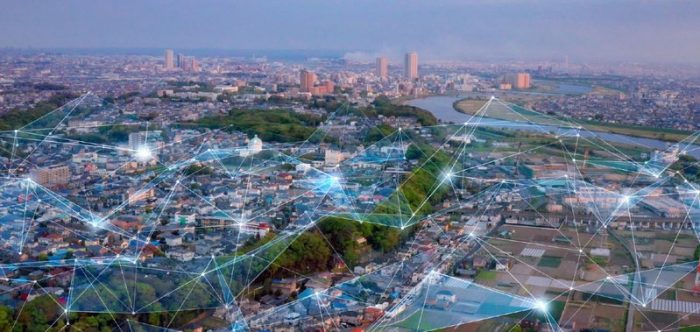
The fast pace of recent solar + storage-based virtual power plant (VPP) rollouts across the country is leading to the emergence of new asset class for institutional investors, say players in the field. Virtual power purchase agreements (VPPA) have all the security of a traditional utility PPA, but depending on the system design, the benefits may be broader and even more lucrative.
VPP contracts may provide investors with stacked revenue streams, including residential customer payments for systems, corporate contract payments for systems, a utility payment for grid services, and possibly arbitraged payments for electricity in wholesale markets.
System hosts then save on their energy bills through the addition of solar and can gain grid services payments if they participate in optional grid programs.
One caveat with VPPAs is that unlike plain-vanilla PPAs, VPPAs wrap around a lot of individual financial factors that differ widely from utility to utility. “Each power plant contract and each VPP contract is unique, in terms of the resource capital, or the type of resource that’s being provided to the utility,” says Suleman Khan, the CEO of Swell Energy, a leader in U.S. VPPs.
Investors want in
Cash is flowing into the VPPA. “We’ve done 300 MW of VPPAs and soon will add another 500 MW project, working with corporates; we are going to smaller assets for a relatively new portfolio,” says Mehul Meta, the chief investment officer for Greenbacker Capital. “I foresee adding another 300 to 400 MW of VPPAs every year.”
Greenbacker, which has a portfolio of 2.9 GW of renewable energy, recently took an equity position in Swell Energy along with two other investors for a combined investment of $120 million. The funds will help Swell deploy 10,000 more energy storage systems toward its mid-term goal of 26,000 systems in homes and businesses.
This B investment round for Swell was led by SoftBank Vision Fund 2 and Greenbacker Development Opportunities Fund I, LP, with participation from Ares Management Infrastructure Opportunities Fund.
“Swell’s business model is an innovative application of existing technology directly solving two large issues plaguing the grid and renewable energy adoption: transmission and load shifting,” said Ben Baker, managing director and principal of Greenbacker Development Opportunities Fund, at the time of the investment.
In building out VPPs, Swell has redefined Distributed Energy Sources (DER) as Dispatchable Energy Resources, says Kahn. “In our mind, the virtual power plant, which is to say, an aggregated set of dispatchable resources, is a brand-new asset class with a solar + storage battery configuration.”
“Where you can aggregate DER with the right technology, and you have utilities or wholesale markets willing to be on the other side of this, you see this phenomenon of centralized generation infrastructure investors fully appreciating that it’s gone from centralized to distributed, yet controlled in a centralized manner,” Kahn explains.
VPPAgnostic
Swell Energy has formed VPPs in a handful of trending states, based on solar + storage. In February 2022, Swell rolled out its proprietary distributed energy resource management system, GridAmp, in Hawaii. The platform aggregates solar and energy storage systems into VPPs to provide advanced grid capabilities to utilities through what they call a “VPP in a Box” solution.
While some solar companies are developing VPPs for their own customers, like Sunrun, Swell is agnostic about ownership and financing. “All are welcome in our VPPs irrespective of whether their battery was financed (i.e. leased) by a third party, purchased by loan or owned by the customer. And in the future, irrespective of whether that battery has wheels on it or not,” says Kahn, referring to bi-directional EV battery charging inverters.
Swell is organized around three internal divisions. The Development Company works with a network of about 50 installer partners whom are in the field across various geographies. The Finance Company provides leases to customers and during Q1 of 2023 will be launching its next lease fund as well as a loan fund. Finally, the Grid Company is in the business of aggregating capacity and enrolling utilities into VPPAs.
Community solar signups
One way that VPPs may spread across the country is adoption by community solar programs. “A natural for VPPs would be community solar projects of 1 to 2 MW, with household generators and a VPPA for the end user,” observes Meta.
Greenbacker recently announced such a deal with three to-be-constructed community solar projects in New York, working with ReneSola Power Holdings, the company announced. The portfolio will have a commercial generation capacity of 8.7 MWdc by the end of 2023.
The three projects are part of New York’s Value of Distributed Energy Resources (VDER) program, a net crediting system in which consumers can elect to receive a monetary credit toward their energy costs in an amount equal to the VDER generated by a community solar project.
The IRA play
The Inflation Reduction Act (IRA) will help set the stage for more VPP participation through the $837 million in grants and loans earmarked through the U.S. Department of Housing and Urban Development (HUD) for sustainability improvements to affordable housing. Those funds are expected to seed up to $4 billion in loans for projects that may include energy efficiency, climate resilience, building electrification and more.
The IRA also earmarks $20 billion to provide resources to green banks and Community Development Financial Institutions (CDFI) for clean energy projects, which could include community solar + storage VPPs.
In conclusion, the VPP universe is beaming around us rapidly, especially when the VPPA operates with an agnostic eye toward battery brand and owner financing. “I used to say, ‘Swell is kind of like the United Nations of batteries’. Then one of my colleagues suggested, ‘Can we please just be the G7?’” says Kahn.
Charles W. Thurston is a contributor to Solar Builder based in Northern California.
— Solar Builder magazine
[source: https://solarbuildermag.com/news/vpps-are-an-emerging-investment-asset-class/]

Leave a Reply
You must be logged in to post a comment.